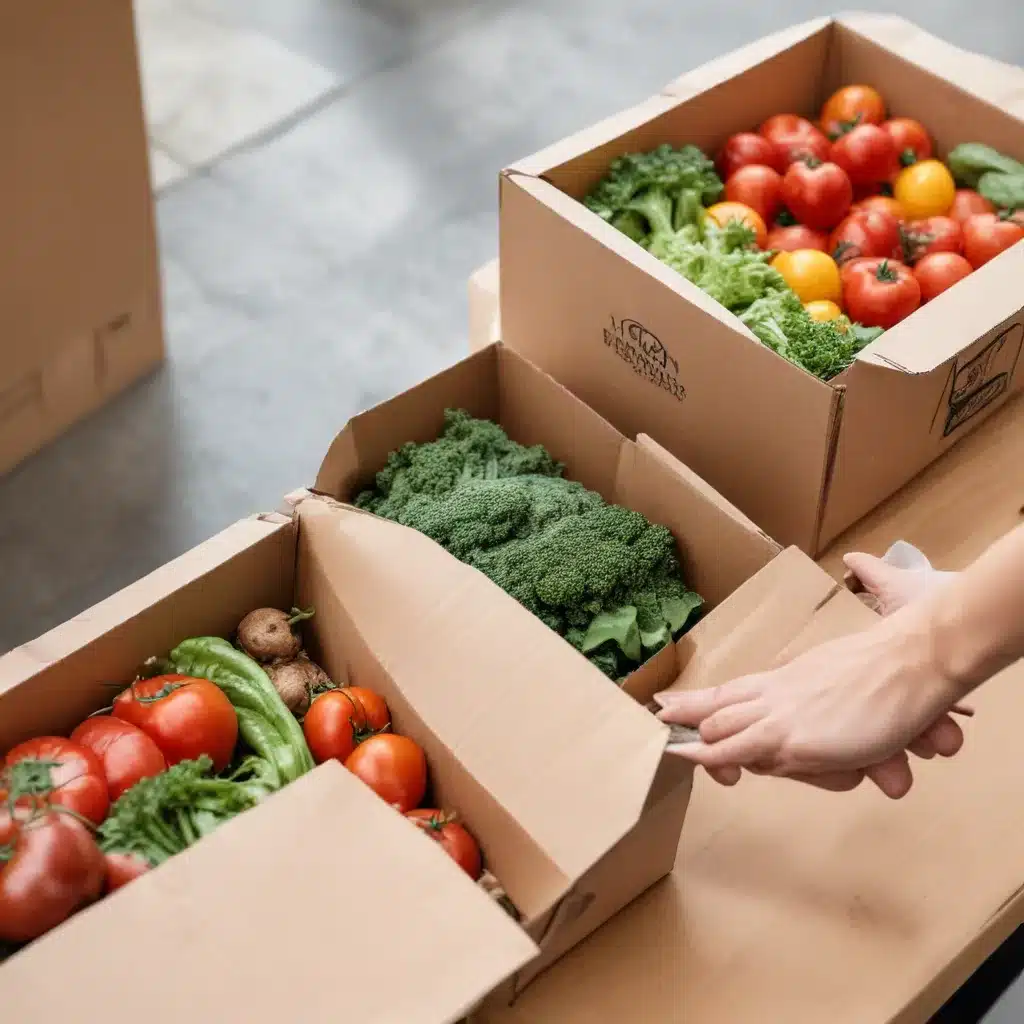
The Evolving Landscape of Online Food Ordering and Delivery
In today’s fast-paced world, the convenience of ordering meals online and having them delivered directly to our doorsteps has become an increasingly popular trend. As consumers increasingly turn to a variety of online retailers, including meal-kit subscription services, ghost kitchens, and third-party delivery platforms, ensuring the safety of these foods has become a pressing concern for both industry and regulatory bodies.
The U.S. Food and Drug Administration (FDA), in collaboration with the U.S. Department of Agriculture (USDA) and the Centers for Disease Control and Prevention (CDC), has recognized the need to address the potential food safety vulnerabilities that may arise in the “last mile” of the delivery process. To this end, the FDA has worked closely with the Conference of Food Protection (CFP), a non-profit organization that provides a formal process for developing and modifying recommended national retail food safety policies.
“Addressing the safety of foods ordered online and delivered directly to consumers is a priority outlined in the New Era of Smarter Food Safety blueprint,” the FDA stated in a recent announcement. This collaboration underscores the agency’s commitment to engaging with industry, consumers, and all stakeholders to ensure food safety as new business models emerge to meet the evolving needs of modern consumers.
Navigating the Complexities of Online Food Delivery
The surge in online food ordering and delivery has presented a range of challenges that require a proactive and comprehensive approach to food safety. As consumers increasingly rely on these services, it is essential to understand the potential risks and the best practices that can mitigate them.
Potential Food Safety Vulnerabilities
The “last mile” of the delivery process, where food is transported from the point of preparation to the consumer’s doorstep, is a critical area of concern. During this final stage, food items may be exposed to a variety of factors that can compromise their safety, including:
- Temperature Control: Maintaining proper temperature during transportation and delivery is crucial to prevent the growth of potentially harmful bacteria, such as Salmonella and Listeria.
- Packaging and Handling: Improper packaging or rough handling can lead to physical contamination, potentially introducing foreign objects or compromising the integrity of the food.
- Cross-Contamination: The commingling of different food items, or the use of shared delivery containers, can result in the transfer of allergens or pathogens from one product to another.
- Timeliness of Delivery: Delays in the delivery process can allow perishable foods to remain at unsafe temperatures for an extended period, increasing the risk of foodborne illness.
Best Practices for Meal Delivery Services
To address these concerns, the FDA, in collaboration with industry stakeholders, has identified a set of best practices that meal delivery services should consider implementing:
- Preventive Controls: Meal delivery services should have well-established food safety protocols, including hazard analysis, critical control points (HACCP) plans, and robust training programs for their employees.
- Temperature Monitoring: Continuous temperature monitoring during transportation and delivery, combined with the use of insulated packaging and ice packs, can help ensure that perishable foods remain within safe temperature ranges.
- Traceability and Labeling: Comprehensive labeling and tracking systems can aid in the rapid identification and removal of potentially contaminated products, should an issue arise.
- Allergen Management: Clear communication and proper labeling of allergen information can help consumers make informed choices and avoid potential reactions.
- Consumer Education: Providing consumers with guidance on proper food handling, storage, and preparation can empower them to maintain food safety at the final stage of the delivery process.
Collaboration and Engagement: The Key to Safer Online Meal Delivery
The FDA’s commitment to addressing food safety in the era of online meal delivery is evident in its ongoing efforts to engage with industry, consumers, and other stakeholders. The agency’s recent New Era of Smarter Food Safety Summit on E-Commerce brought together a diverse group of participants to discuss the challenges and identify potential solutions.
During the three-day virtual event, attendees had the opportunity to provide feedback and share their experiences, underscoring the cross-cutting nature of this issue. The FDA’s openness to public input and its willingness to collaborate with industry and consumer organizations demonstrate a holistic approach to ensuring the safety of online-ordered and delivered foods.
As the Kitchen Warrior blog, we recognize the importance of staying informed and empowering our readers with practical, up-to-date information on food safety best practices. By highlighting the FDA’s guidance and the insights gained from the New Era of Smarter Food Safety Summit, we can help meal delivery service providers and consumers alike navigate the evolving landscape of online food ordering and delivery with confidence.
Embracing the New Era of Smarter Food Safety
The rise of online food ordering and delivery services has undoubtedly transformed the way we access and consume our meals. While this convenience has been widely embraced by consumers, it has also introduced new food safety challenges that require a collaborative and proactive approach.
By leveraging the expertise of regulatory agencies, industry partners, and consumer organizations, the FDA is leading the charge in addressing these concerns. Through initiatives like the New Era of Smarter Food Safety blueprint and the recent E-Commerce Summit, the agency is actively engaging with stakeholders to identify best practices and potential solutions.
As we continue to navigate this new era of online food delivery, it is essential that meal delivery service providers, consumers, and regulatory bodies work together to ensure the safety and integrity of the food we consume. By embracing a culture of transparency, communication, and continuous improvement, we can build a stronger, more resilient food system that meets the needs of modern consumers while prioritizing their health and well-being.


